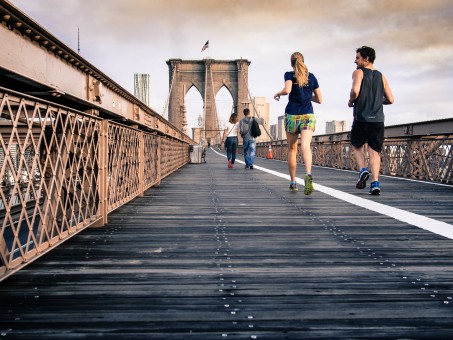
As we get closer to summer, it is important to prepare for the hot and humid days ahead. Outdoor fitness is a great way to stay healthy. However, exercising in the heat can make this activity unsafe.
Exercising in the extreme heat and humidity is one of the most dangerous conditions to workout in. This is because of the way your body cools itself down during exercise, according to Mayo Clinic. Sweating lowers your body temperature, but if it gets hot enough, this body reaction might not work properly.
What happens when exercising in the heat?
It is very easy to sweat too much in hot conditions, which dehydrates your body. Not to mention the heat can make your heart pump faster.
On a similar note, if it’s too humid, your sweat will not evaporate as needed. This means the cooling function of sweat practically brakes down.
These two factors—heat and humidity—can make working out unknowingly dangerous. Here are five ideas that can help you prevent heat-related health issues when exercising this summer:
1. Hydrate 24 hours prior
Exercising in the heat can be less dangerous if you drink enough water. However, the exact amount of water doesn’t matter as much as how soon before you drink it.
As the Cleveland Clinic mentions, it is important to drink water a few hours before outdoor exercise. However, if you are already dehydrated at that point, this will not do much.
It is important to continually drink water in order to keep up with your body’s sweat. This way it will be harder for your body to deplete its water supply. It can also take some time for the hydration to take effect, so at least 24 hours before exercise gives your body time to process it.
If a schedule will help you hydrate properly, try drinking at least a glass of water on the hour for every hour that you are awake.
2. Hydrate with water, not other drinks
While drinking things like Gatorade and juice can be helpful for hydration, this is mainly true after exercising in the heat. Even so, these aren’t really necessary to replace electrolytes unless it is extremely hot or you worked out for more than 60 minutes.
Water is the best form of hydration for the body. As another Dr. Manny article mentions, too much salt from these types of drinks can dehydrate the body even more.
Caffeine is another drink that is not recommended for hydration or exercise. It can dehydrate and increase heart rate, which is the opposite of what regular water hydration can do.
3. Split your time inside and outside
To avoid heat-related illnesses, try to limit your time outside in the hot sun. However, this does not mean that you shouldn’t work out.
If you want to go for a 30-minute jog, walk, bike ride etc., then start with 15 minutes outside and do the rest inside if possible.
This way, you can exercise for your desired amount, but you cut the time in the heat in half.
Even if you don’t belong to a gym or do not have the proper equipment, it is easy to come up with creative indoor workout ideas.
For example, even running up and down the stairs can count as cardio for the day if you do it for long enough. The key is to protect yourself from the heat, but also come up with ways to increase your heart rate indoors.
4. Work out in the morning or at night
Instead of going outside to workout midday, try working out when you first wake up in the morning or at night after the sun goes down.
While this depends on convenience, it is important to pay attention to the heat at different times of the day. As another Dr. Manny article mentions, mornings and nights are much cooler and therefore, make it safer for you to work out.
Not only will this protect your body from exercising in the heat, but it will also prevent your body from skin damage because midday is when the sun is strongest.

The Best Diets for Feeding Your Brain
5. Wear a hat
If you can manage it while working out, then wearing a hat can protect your head from overheating in the sun.
There are such things as cooling and performance hats online that you can use to cover your head in the heat while working out. These hats are most effective when there is direct and hot sunlight, so this might not help you a lot on a cloudy yet hot and humid day.
This idea falls under the larger concept of dressing properly for the weather. While a hat is one of the best ways to protect your body from the direct sunlight and heat, there are other types of cooling gear like shirts and shorts.
The bottom line is to not wear anything that will make your body heat up even more. And if you can, a hat can help take away the added heat that comes from the sun beating on your head.
Being aware of dangers like the heat when working out is an important first step. Be sure to try these five preventive steps in order to keep your fitness plan going while staying safe outside.


